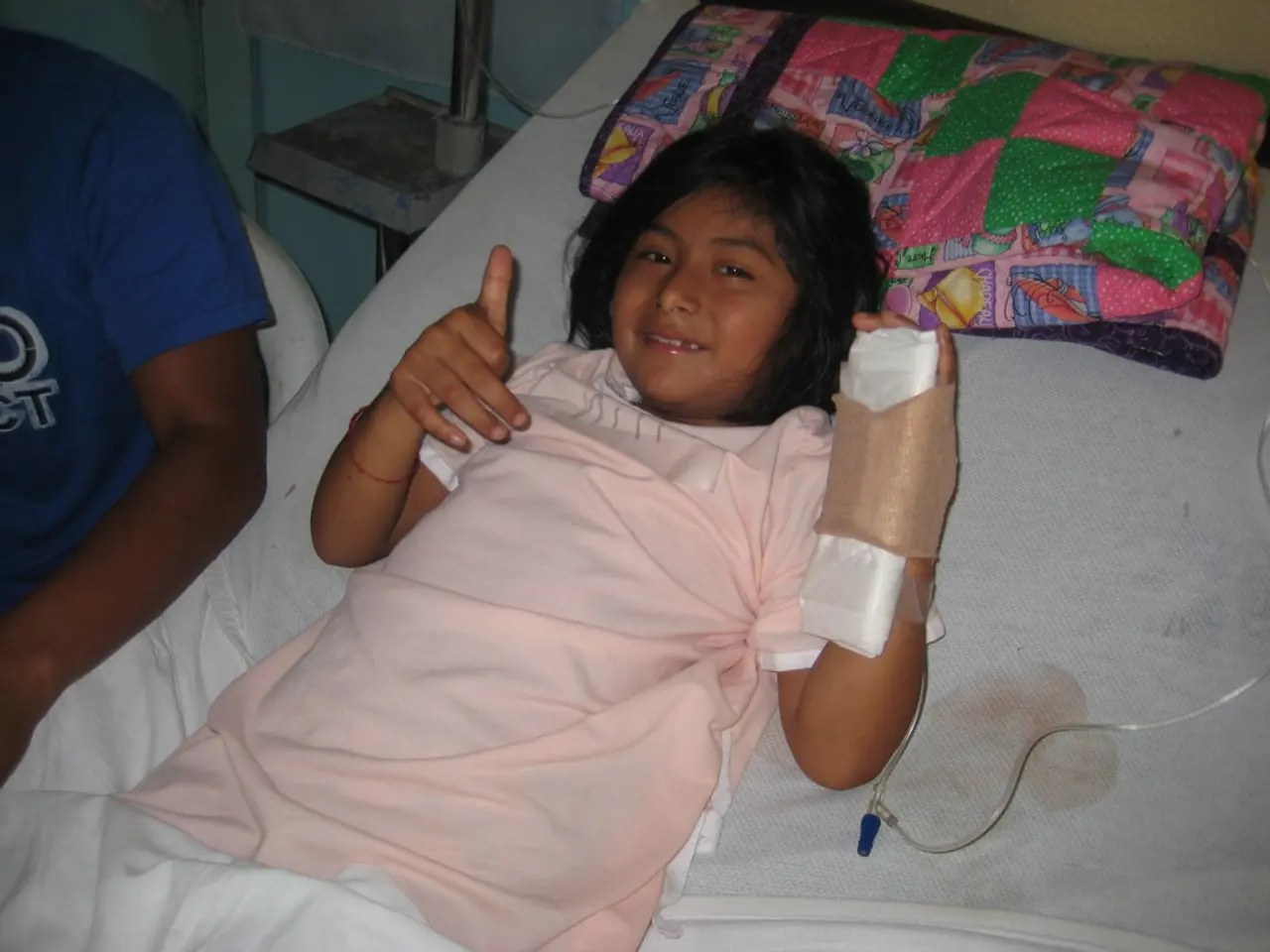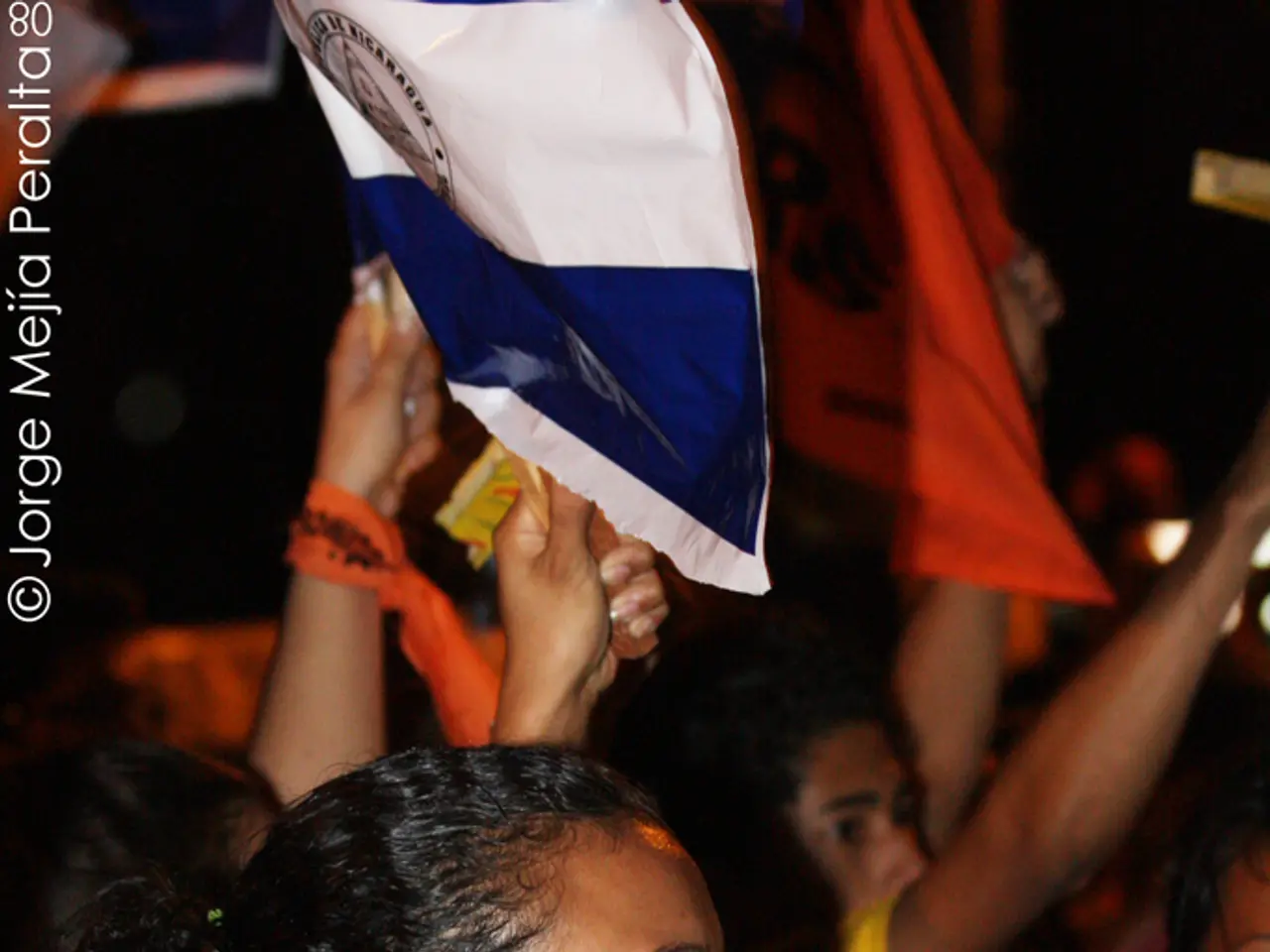Chemotherapy under sunny conditions
Cancer patients undergoing chemotherapy may experience increased light sensitivity, putting them at risk of phototoxic reactions. This can lead to various skin issues, such as redness, blistering, and even severe sunburn-like symptoms.
To help prevent these reactions, the Cancer Information Service of the German Cancer Research Center (DKFZ) offers valuable advice. One method to identify if a medication is causing a phototoxic reaction is by conducting a photo-patch test. In this test, the suspected substance is applied to two skin areas, one of which is then exposed to standardized UV-A radiation.
Chemotherapy drugs like fluorouracil, methotrexate, and dacarbazine can cause the accumulation of photoreactive metabolites in skin cells, generating damaging reactive oxygen species upon UV exposure. This, combined with impaired skin repair due to chemotherapy, can make recovery more challenging.
To protect themselves from UV radiation, cancer patients should follow several key precautions. They should avoid sun exposure during peak UV hours (typically 10 AM to 4 PM) and apply broad-spectrum sunscreen with at least SPF 50 that protects against both UVA and UVB rays, reapplying every two hours, especially if sweating or outdoors for extended periods.
Wearing protective clothing such as long sleeves, pants, wide-brimmed hats, and UV-blocking garments is also essential. Additional sun barriers like sunglasses and umbrellas provide further protection. These protective measures should continue even several weeks after completing chemotherapy, as photosensitivity may persist due to drug effects on skin repair mechanisms.
Cancer patients should also be cautious in the sun due to individual skin properties such as skin type, tanning ability, skin thickness, hair, and personal sensitivity. Certain medications can cause severe skin reactions, resembling sunburn or skin discoloration, upon exposure to sunlight or an overcast sky.
High light sensitivity often results in phototoxic reactions, where increased light exposure in the skin produces substances that damage skin cells. To minimize avoidable skin toxicity during cancer treatment, patient education on strict photoprotection is crucial.
DKFZ operates translation centers with excellent university clinics and research institutions throughout Germany to improve the chances of patients. The German Cancer Research Center is the largest biomedical research institution in Germany, with over 3,000 employees. It is funded 90% by the Federal Ministry of Education and Research and 10% by the state of Baden-Württemberg, and is a member of the Helmholtz Association of German Research Centers.
In addition, wearing sunglasses with UV-A and UV-B filters, a hat, and denser clothing can help protect from UV radiation. Sunscreen with a UV-A filter and very high sun protection factor (SPF 50+) should be applied every two hours when outdoors. UV-A-proof protective film is available for car windows and glass roofs.
It is also worth noting that St. John's wort, a herbal mood brightener, can cause photosensitivity. For detailed information, contact the Cancer Information Service of the German Cancer Research Center. To avoid direct sunlight between 11 am and 3 pm is also recommended.
Phototoxic reactions can also occur if a medication weakens the skin's natural protective mechanisms, allowing harmful substances to accumulate. Changes from a phototoxic reaction may disappear on their own when the skin is no longer exposed to UV radiation.
By following these guidelines, cancer patients can take important steps to protect themselves from UV radiation and reduce the risk of phototoxic reactions during chemotherapy.
- The Cancer Information Service of the German Cancer Research Center (DKFZ) suggests conducting a photo-patch test to identify if a medication is causing a phototoxic reaction, which can lead to skin issues in cancer patients undergoing chemotherapy.
- To protect themselves from UV radiation, cancer patients should avoid sun exposure during peak UV hours, apply broad-spectrum sunscreen with at least SPF 50 that protects against both UVA and UVB rays, and wear protective clothing such as long sleeves, pants, hats, and UV-blocking garments.
- Certain medications, including fluorouracil, methotrexate, and dacarbazine, used in chemotherapy, can cause the accumulation of photoreactive metabolites in skin cells, leading to increased light sensitivity, mental-health issues, and various medical-conditions like skin-care problems.




